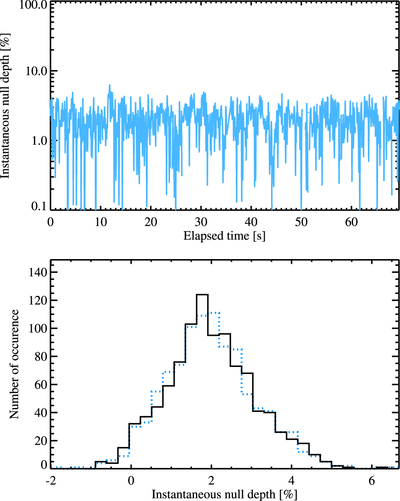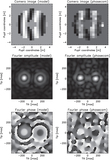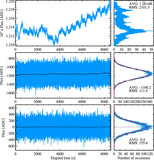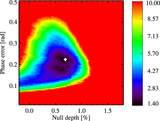Image Details

Caption: Figure 8.
Top: null depth sequence obtained on β Leo (typical results, 2015 February) vs. elapsed time in seconds. The large excursions in the null depth are dominated by variable precipitable water vapor. Bottom: measured null depth distribution (solid line) and best-fit synthetic null depth distribution (dashed line). The reduced χ2 (﹩{\chi }_{r}^{2}﹩) amounts to 0.56 (see definition in Hanot et al. 2011, Equation (17)).
Copyright and Terms & Conditions
© 2016. The American Astronomical Society. All rights reserved.












